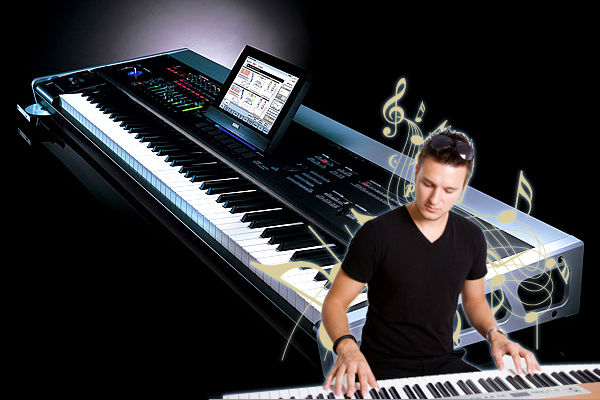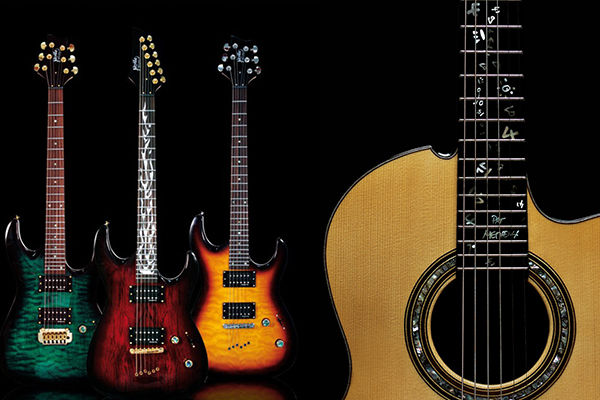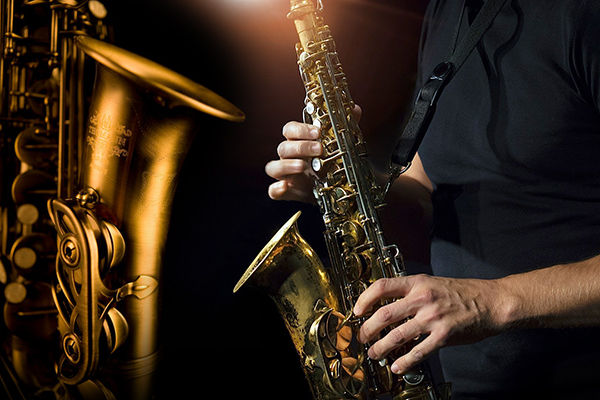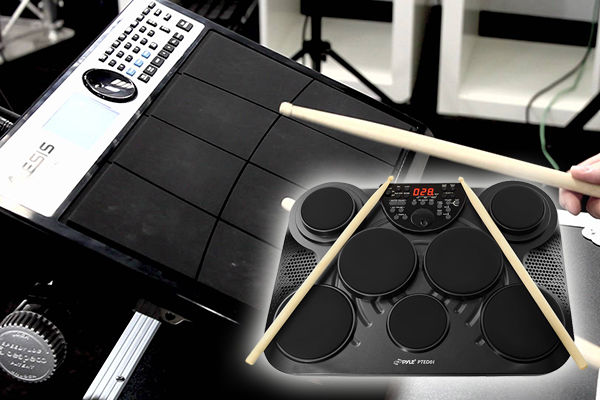

Monday to Saturday
10 AM to 10 PM
Sunday 10 AM to 2 PM



A musical keyboard is the set of adjacent depressible levers or keys on a musical instrument. Keyboards typically contain keys for playing the twelve notes of the Western musical scale, with a combination of larger, longer keys and smaller, shorter keys that repeats at the interval of an octave. Depressing a key on the keyboard causes the instrument to produce sounds, either by mechanically striking a string or tine (piano, electric piano, clavichord); plucking a string (harpsichord); causing air to flow through a pipe (organ); or strike a bell (carillon). On electric and electronic keyboards, depressing a key connects a circuit (Hammond organ, digital piano, synthesizer). Since the most commonly encountered keyboard instrument is the piano, the keyboard layout is often referred to as the "piano keyboard".

The guitar is a popular musical instrument classified as a string instrument with anywhere from 4 to 18 strings, usually having 6. The sound is projected either acoustically or through electrical amplification (for an acoustic guitar or an electric guitar, respectively). It is typically played by strumming or plucking the strings with the right hand while fretting (or pressing against the fret) the strings with the left hand. The guitar is a type of chordophone, traditionally constructed from wood and strung with either gut, nylon or steel strings and distinguished from other chordophones by its construction and tuning. The modern guitar was preceded by the gittern, the vihuela, the four-course Renaissance guitar, and the five-course baroque guitar, all of which contributed to the development of the modern six-string instrument.

The saxophone (also referred to as the sax) is a family of woodwind instruments. Saxophones are usually made of brass and played with asingle-reed mouthpiece similar to that of the clarinet. Each series consisted of instruments of various sizes in alternating transposition. The series pitched in Band designed for military bands, have proved extremely popular and most saxophones encountered today are from this series. Instruments from the so-called "orchestral" series, pitched in C and F, never gained a foothold, and the B and E instruments have now replaced the C and F instruments when the saxophone is used in the orchestra. The saxophone is commonly used in classical music (such as concert bands, chamber music, and solo repertoire), military bands (such as military concert bands, marching bands, etc.), marching bands, and jazz (such as big bands, jazz combos, etc.).

All of these are classed as non-pitched percussion, allowing for the music to be scored using percussion notation, for which a loose semi-standardized form exists for the drum kit. If some or all of them are replaced by electronic drums, the scoring and most often positioning remains the same, allowing a standard teaching approach. The drum kit is usually played seated on a drum stool or throne. The drum kit differs in general from those traditional instruments that produce melody or chords/pitch per se: even though drums are often placed musically alongside others that do, such as the piano or stringed instruments. Many drummers extend their kits from this basic pattern, adding more drums, more cymbals, and many other instruments including pitched percussion. In some styles of music particular extensions are normal, for example double bass drums in heavy metal music.

The violin, also known as a fiddle, is a string instrument, usually with four strings tuned in perfect fifths. It is the smallest, highest-pitched member of the violin family of string instruments, which also includes the viola, and the cello. The modern word is derived from the Italian wordviolino, literally meaning 'small viola'. Someone who plays the violin is called a violinist or a fiddler. The violinist produces sound by drawing a bow across one or more strings (which may be stopped by the fingers of the other hand to produce a full range of pitches), by plucking the strings (with either hand), or by a variety of other techniques. The violin is played by musicians in a wide variety of musical genres, including Baroque music, classical, jazz, country music,bluegrass music, folk music, metal, rock and roll, and soft rock. The violin has come to be played in many non-Western music cultures all over the world.The violin is sometimes informally called a fiddle, regardless of the type of music played on it.

A control device used as an alternative to a keyboard, mainly for playing drum and percussion sounds. A drum pad is intended to be struck or tapped, with either drum sticks or the fingers. It generates a trigger signal which usually triggers an envelope generator to play a sound with a fixed envelope profile. It may also sense velocity. Most modern drum pads use a MIDI interface, and they do the triggering function by sending a note on message with the velocity if sensed, immediately followed by a note off. Drum pads intended to be played with sticks are usually the approximate size and shape of real drums. They use some type of sensing surface with shock absorbing properties (a lesson learned after the hard-surfaced pads sold with the early version of the Simmons SDS-V caused wrist problems for some performers). The sensing surface may be divided into multiple zones which send different signals depending on where the pad is hit. They are frequently assembled into drum kits, in the same general manner as conventional drums
